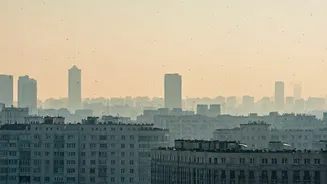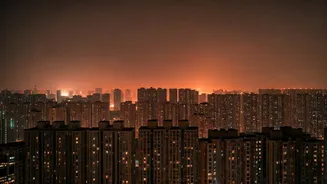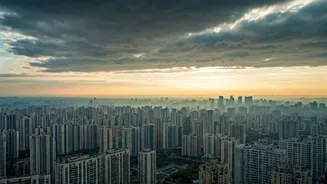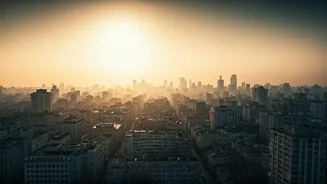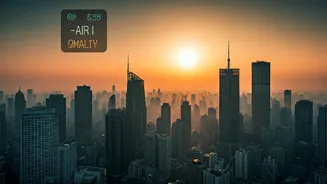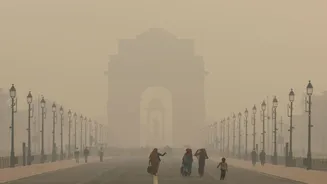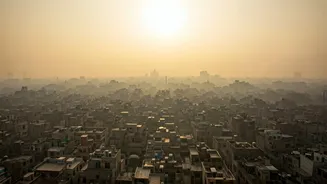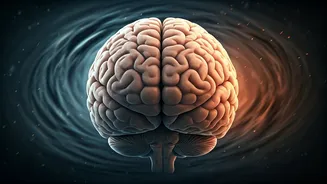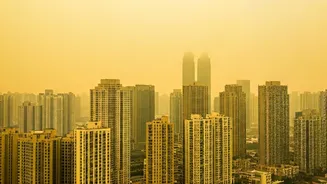Diwali's Aftermath in Delhi
The aftermath of Diwali brought a stark reality to Delhi as the city grappled with its worst air quality in at least three years. The relentless bursting
of firecrackers during the festival led to a sharp increase in pollutants, leaving the air thick with smog. This was a clear sign of the environmental impact, as Delhiites woke up to a haze, significantly impacting the city's air quality index (AQI). The 'severe' air quality designation underscored the immediate health risks faced by residents, emphasizing the need for urgent action to mitigate the effects of the pollution.
AQI Levels Soared High
The air quality index (AQI) across Delhi consistently displayed alarming numbers, classified as 'very poor' to 'severe', the day after Diwali. The pollutants, primarily from the smoke of fireworks, resulted in hazy skies and a noticeable deterioration in visibility. This sharp rise in pollutants was a direct consequence of the continuous bursting of firecrackers. The impact was felt across various localities, making it evident that the air quality had reached hazardous levels. Localities such as Colaba and Nandadeep Garden in Mumbai also recorded 'very poor' AQI levels, underscoring the widespread nature of the pollution problem following Diwali celebrations.
Health Risks & Concerns
The severe air quality posed immediate health risks, particularly for vulnerable groups like children, the elderly, and those with respiratory issues. Breathing in such polluted air could trigger or worsen respiratory illnesses, leading to immediate health complications. The persistent exposure to harmful particles suspended in the air heightened the risk of health problems. Health officials and environmental experts reiterated their concerns about the long-term impact on public health, emphasizing the urgent need for measures to mitigate these risks. People were advised to take necessary precautions like staying indoors and using air purifiers to reduce exposure to the harmful pollutants.
Why Fireworks Cause This
The root cause of Delhi's air quality crisis was attributed to the widespread use of firecrackers during Diwali. The combustion of these fireworks releases a cocktail of harmful chemicals and particulate matter into the atmosphere. The pollutants, including fine particulate matter (PM2.5) and other gases, lingered in the air, creating a toxic environment. As many residents burst firecrackers, the concentration of these harmful substances significantly increased, leading to the 'severe' air quality levels. Authorities and environmentalists highlighted the need to limit or ban the use of fireworks to prevent such severe air quality degradation in the future.
Addressing the Crisis
In response to the air quality crisis, measures were discussed and sometimes implemented to mitigate the impact of the pollution. The focus was on limiting further pollution and ensuring the health and safety of the population. Although specific actions varied, the objective was to improve air quality and protect citizens from the health hazards associated with poor air quality. Awareness campaigns were also initiated to educate the public on the risks of air pollution and the need for adopting environmentally friendly practices. Public health experts also suggested individuals take necessary precautions. The urgency of the situation underscored the importance of implementing sustainable strategies to improve air quality over the long term.
